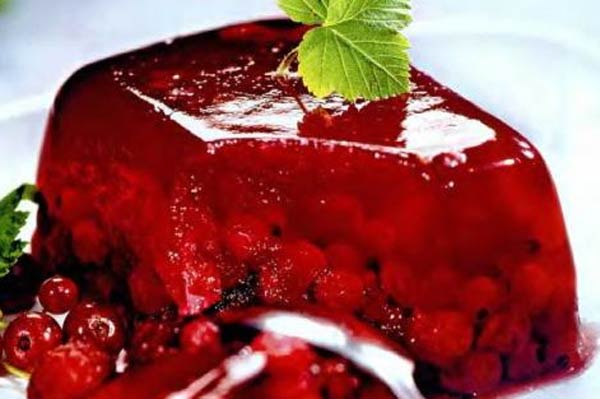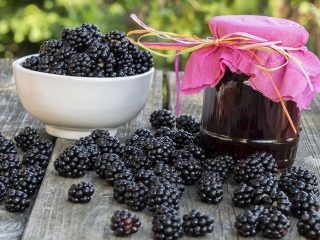Content
Raspberry jam, like jelly for the winter, can be prepared using various food additives. The most used are pectin, gelatin, agar-agar. They are gel-forming substances of both plant and animal origin. It is worth learning how to make jam (jelly) for the winter using gelatin and pectin.
Features of preparing jelly raspberry jam
There is probably no home where there is not a jar of raspberry jam - regular or in the form of jelly. Even the laziest housewives stock up on them for the winter. The fact is that raspberry jam (jelly) is not only a tasty treat and an excellent dessert for tea, but also an effective remedy for colds, vitamin deficiency and other health problems that arise during the cold season.
At the first stage of preparing raspberry jam (jelly), it is very important to start processing the berries correctly. Raspberries have a delicate structure and require special treatment. Of course, it’s better not to wash it at all.But if the source of origin of the raspberries is unknown, it is unclear in what conditions they grew, it is better to process the berries. This must be done quickly and very carefully, under a light, gentle stream of water. Leave the berries on the sieve to drain, or place them carefully on a clean, dry towel.
Next, it is important to decide on the choice of gelling agent necessary for the raspberry jam to thicken well and turn into jelly. There are several options:
- gelatin;
- pectin;
- agar-agar.
Most often, pectin is used to prepare thick raspberry jam in the form of jelly. This is a substance of plant origin, which is usually industrially obtained from apples and citrus peels. Therefore, it is ideal for fruit and berry preservation, including raspberry jam in the form of jelly.
In addition, the use of pectin has a number of advantages:
- Well preserves and emphasizes the aroma of berries and fruits;
- helps preserve the original shape of the fruit and does not contribute to their rapid boiling;
- preserves the original color of the berries;
- reduced cooking time ensures better preservation of nutrients in berries.
Pectin is mixed with a small amount of sugar and added to the already boiled raspberry jam. From this point on, it should not be exposed to high temperatures for more than 5 minutes. Further cooking will negate all its gelling properties. Pectin itself is harmless, but in large quantities it can cause unwanted reactions in the body, such as intestinal obstruction and food allergies.
Using gelatin you can also make raspberry jam like jelly. In addition to its gel-forming properties, amino acids and minerals bring benefits to humans.Animal gelatin is rich in such substances. It prevents the sugar contained in raspberry jam or jelly from crystallizing over time.
Recipes for jelly-like raspberry jam
Many people like their raspberry jam for the winter to be thick like jelly and like marmalade. This makes it more convenient to put it on top of a bun covered with butter, to use it in baking, and when preparing sweet desserts. To obtain the desired consistency, additional ingredients such as gelatin, pectin, gelatin or agar-agar are used in raspberry jam (jelly) for the winter.
A simple recipe for raspberry jam for the winter with gelatin
Ingredients:
- raspberries (red) – 1 kg;
- granulated sugar – 1 kg;
- gelatin – 1 package (50 g).
Clean the berries from dust and debris. Dry slightly by placing on a sieve. Then place in a deep enamel bowl or pan, cover with sugar. Wait until the juice comes out. Place the container with raspberry jam on the stove and heat to a boil, stirring all the time. As a result, all the sugar should dissolve.
When the raspberry jam boils, remove the foam from its surface and add gelatin, previously diluted in water, which by this time is already thoroughly swollen. Stir everything together and put the finished raspberry jam with gelatin into sterilized jars. Roll up with the same clean and airtight lids.
Raspberry jam with jellyfix
Ingredients:
- raspberries – 1 kg;
- sugar – 0.5 kg;
- Zhelfix 2:1 – 1 package (40 g).
Do not wash the berries if they come from your own dacha or garden. Grind in a blender and pour the puree into a saucepan. Add a package of gelfix, pre-mixed with two tablespoons of sugar. Stir and bring the whole mixture to a boil.After this, add the remaining amount of sugar. Stir, wait until the berry mass begins to boil again, cook for 3 minutes. Preserve hot raspberry jam (jelly) in sterile, hermetically sealed jars.
Raspberry jam-jelly with pectin
Ingredients:
- raspberries – 2 kg;
- granulated sugar – 2 kg;
- pectin – 1 sachet.
Raspberries must first be prepared for cooking: lightly washed, dried, and removed spoiled berries and debris. If you come across white worms, soak the raspberries in a weak salt solution and they will float up. They will be easy to separate from the berry mass by simply draining the water.
Mash the dried berries until smooth. Add pectin to the raspberry puree and place on the stove. After boiling, cook for 5-10 minutes depending on the desired thickness. Roll the prepared raspberry jelly jam into small jars, clean and sterilized, for the winter.
Jelly-like jam for the winter from raspberries and currant juice
Ingredients:
- raspberries (berries) – 1 kg;
- red currant (juice) – 0.3 l;
- sugar – 0.9 kg.
In this recipe, currant juice will replace water, provide the necessary sourness and act as a jelly-forming substance. As you know, red currants contain a lot of pectin, which is an excellent natural thickener.
Mix all ingredients and put on fire to evaporate excess liquid. After half an hour, rub the raspberry puree through a sieve. Bring the resulting mass to a boil and pour into jars. Roll up the raspberry jam (jelly) with clean, boiled lids.
Calorie content of jelly-like raspberry jam
Raspberry jam (jelly), prepared for the winter, is a rather sweet product, which determines its high energy value. Calorie content, as a rule, ranges from 350-420 kcal per 100 g of product. The indicator directly depends on the amount of sugar introduced into raspberry jam (jelly). The sweeter, the higher the calories.
Many people, fearing that sugar is harmful to their figure, teeth, or for medical reasons, do not add it to the recipe for raspberry jam with gelatin, replacing it with natural or artificial sweeteners. Some do without them completely, canning raspberries with the taste characteristics that are given to them by nature.
Terms and conditions of storage
It is better to store raspberry jam in the basement, where the temperature is maintained relatively stable all year round and its indicators are significantly lower than in a living room. If you don’t have one, you can get by with a storage room arranged right on the square meters of the apartment. Such a corner for household needs should be placed at a considerable distance from radiators, fireplaces, and stoves. An excellent option is a storage room located on an insulated loggia, where the temperature even in the coldest winter does not drop below +2 - +5 degrees.
Conclusion
Raspberry jam, like jelly for the winter, should be prepared using food additives such as gelatin and pectin. They will help achieve the desired consistency of the finished product and will reduce the amount of sugar used when making raspberry jam.















